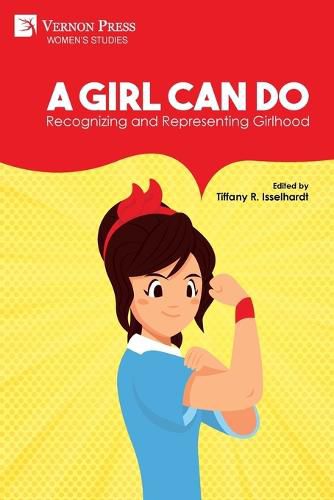Readings Newsletter
Become a Readings Member to make your shopping experience even easier.
Sign in or sign up for free!
You’re not far away from qualifying for FREE standard shipping within Australia
You’ve qualified for FREE standard shipping within Australia
The cart is loading…






This title is printed to order. This book may have been self-published. If so, we cannot guarantee the quality of the content. In the main most books will have gone through the editing process however some may not. We therefore suggest that you be aware of this before ordering this book. If in doubt check either the author or publisher’s details as we are unable to accept any returns unless they are faulty. Please contact us if you have any questions.
How do scholars research and interpret marginalized populations, especially those that are seldom recognized as marginalized or whose sources are believed to be rare?
Combining intersectional feminism and public history methodologies, ‘A Girl Can Do: Recognizing and Representing Girlhood’ reflects on how girlhood is found, researched, and interpreted in museums, archives, and historic sites. Defining girl as self-identifying females under the age of 21, ‘A Girl Can Do’ lays the groundwork for understanding girlhood, its constructs, and its marginalization while providing faculty, students, and working professionals with ten case studies on researching and working with girlhood.
Contributors include archaeologists, archivists, curators, educators, and historians who demonstrate how adding a girl studies lens fosters greater inclusivity and diversity in our work. Whether studying spatial techniques of marginalization in colonial Peru, the daybooks as records of girlhood in late-nineteenth century Sweden, or collaborating with self-identifying fangirls to produce a pop-up exhibition, the contributors demonstrate the variety of sources and methods that can be used to interpret this oft-overlooked population. Throughout, ‘A Girl Can Do’ petitions for collaborative and creative thinking in how we can reframe and reinterpret our sources - both traditional and overlooked - to shed new light on how girls have contributed to, and provide frames of reference for, human history and culture.
$9.00 standard shipping within Australia
FREE standard shipping within Australia for orders over $100.00
Express & International shipping calculated at checkout
This title is printed to order. This book may have been self-published. If so, we cannot guarantee the quality of the content. In the main most books will have gone through the editing process however some may not. We therefore suggest that you be aware of this before ordering this book. If in doubt check either the author or publisher’s details as we are unable to accept any returns unless they are faulty. Please contact us if you have any questions.
How do scholars research and interpret marginalized populations, especially those that are seldom recognized as marginalized or whose sources are believed to be rare?
Combining intersectional feminism and public history methodologies, ‘A Girl Can Do: Recognizing and Representing Girlhood’ reflects on how girlhood is found, researched, and interpreted in museums, archives, and historic sites. Defining girl as self-identifying females under the age of 21, ‘A Girl Can Do’ lays the groundwork for understanding girlhood, its constructs, and its marginalization while providing faculty, students, and working professionals with ten case studies on researching and working with girlhood.
Contributors include archaeologists, archivists, curators, educators, and historians who demonstrate how adding a girl studies lens fosters greater inclusivity and diversity in our work. Whether studying spatial techniques of marginalization in colonial Peru, the daybooks as records of girlhood in late-nineteenth century Sweden, or collaborating with self-identifying fangirls to produce a pop-up exhibition, the contributors demonstrate the variety of sources and methods that can be used to interpret this oft-overlooked population. Throughout, ‘A Girl Can Do’ petitions for collaborative and creative thinking in how we can reframe and reinterpret our sources - both traditional and overlooked - to shed new light on how girls have contributed to, and provide frames of reference for, human history and culture.